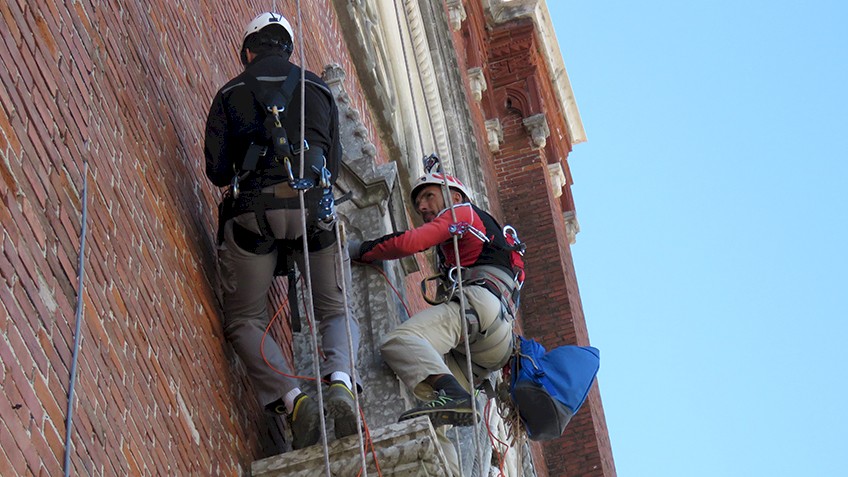
Mechanical analysis of materials
The materials of historical buildings can be analyzed through site measurements and laboratory tests, which are complementary to help the understanding of the building’s structural behavior. The laboratory tests, of course, involve the possibility of taking a sample and carrying it to the laboratory. It is possible only with regard to the execution of mechanical tests on cores as well as physical, chemical and mineralogical-petrographic tests, which generally involve small quantities of material to be examined.
In situ diagnostic techniques can provide useful results without requiring the removal of samples. They are classified as Non Destructive Test(in the following referred to as NDT) and Slightly Destructive Test (SDT). NDT do not leave any residual evidence on the structure to be analyzed. Because of the low cost of the single test, these techniques may be carried out in an extensive way; however, the values they provide have necessarily to be correlated with mechanical values to be used in the design: these correlations can often be imprecise in their application.
Therefore, the direct measurement of the mechanical parameters of the masonry can be performed through SDT. They create minimum trouble on the structure, such as small holes in the case of coring and other tests to be performed in the hole, or a small cut along a mortar joint in the case of flat jack test. For this reason, these techniques cannot be applied on surfaces whose integrity must be maintained as in the case of valuable coatings, frescoes or mosaic surfaces. Generally SDT have a unit cost higher than NDT, however they provide a direct measurement of the mechanical values relevant for the structural analysis. Therefore, the SDT and the NDT are not alternative but complementary: the SDT provide a limited number of significant values but they can be extrapolated to the whole structure through the measurements provided by the NDT that reduce the invasiveness of the investigative operation.



